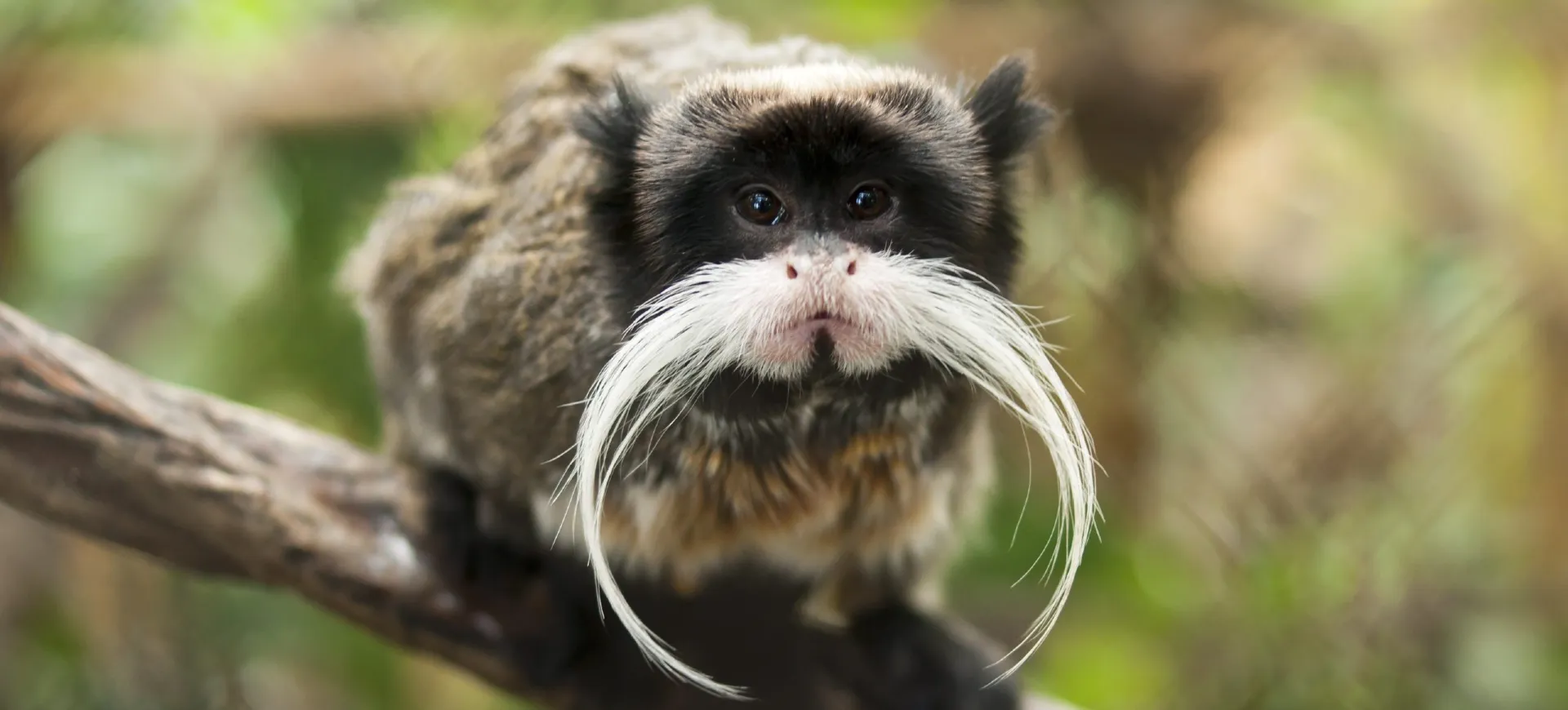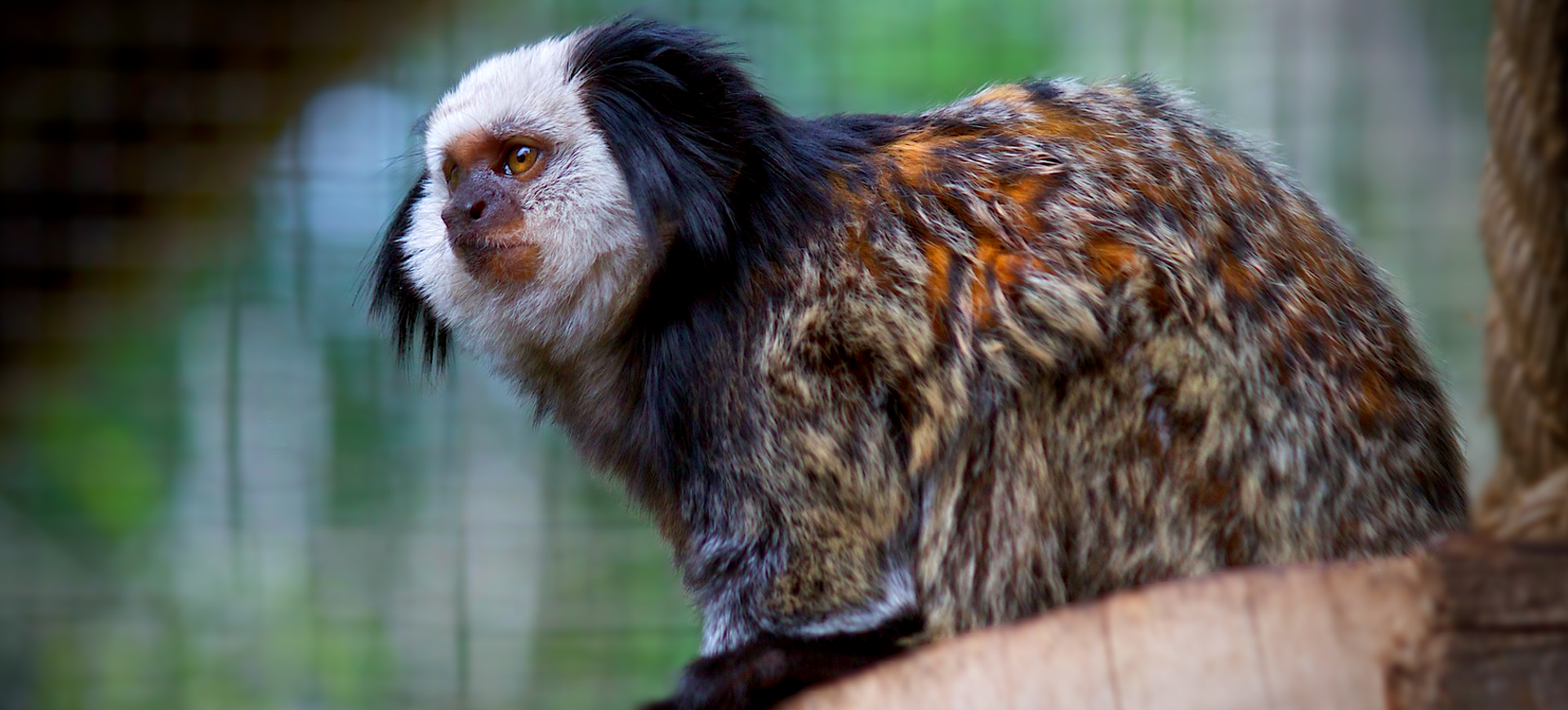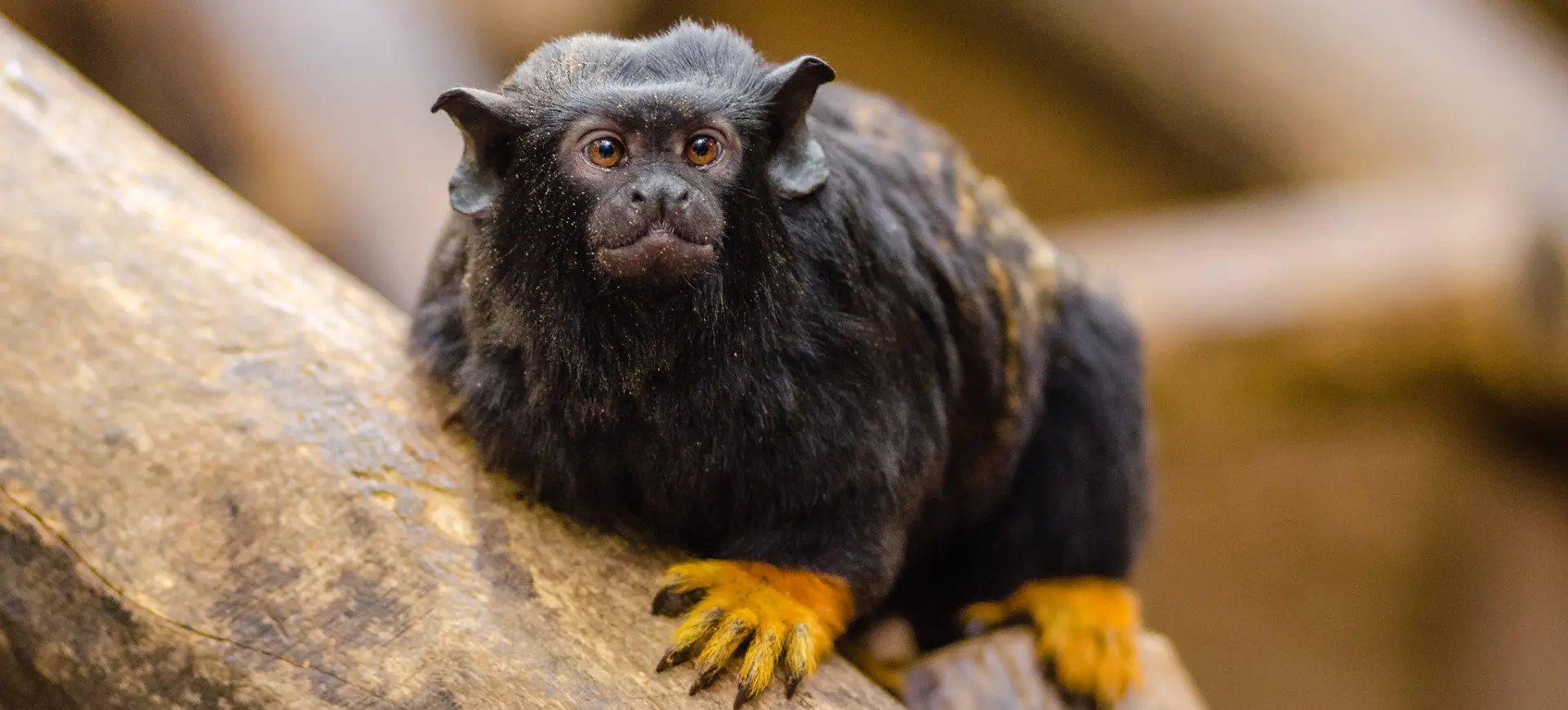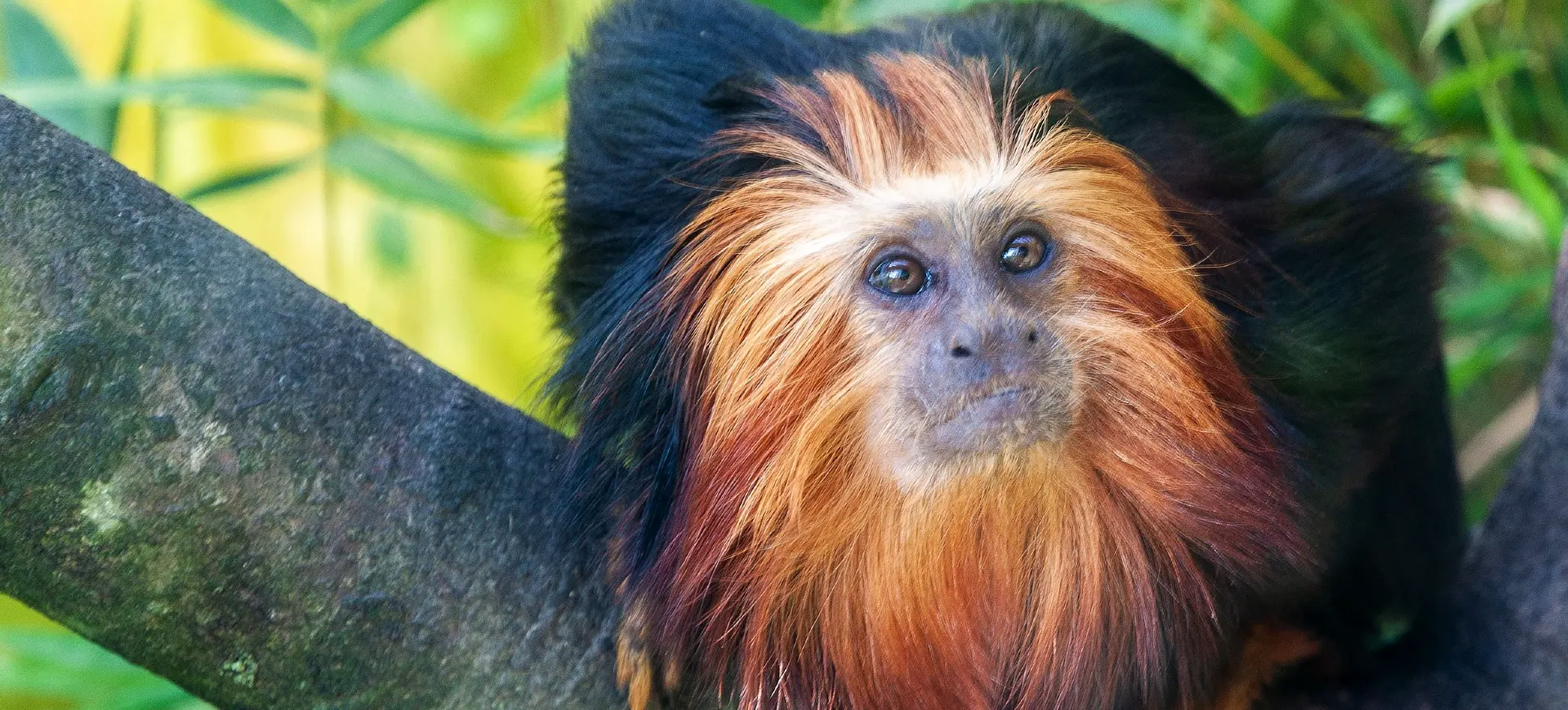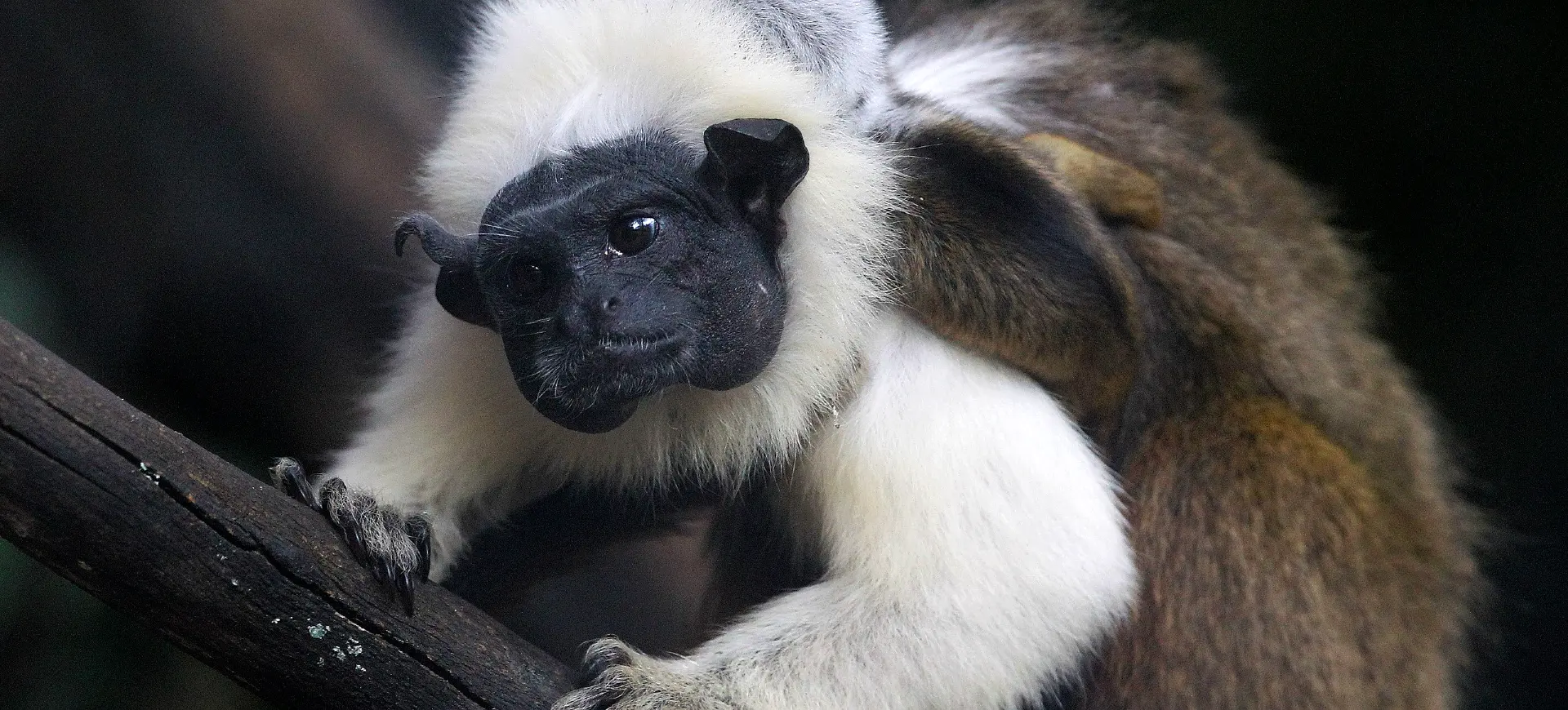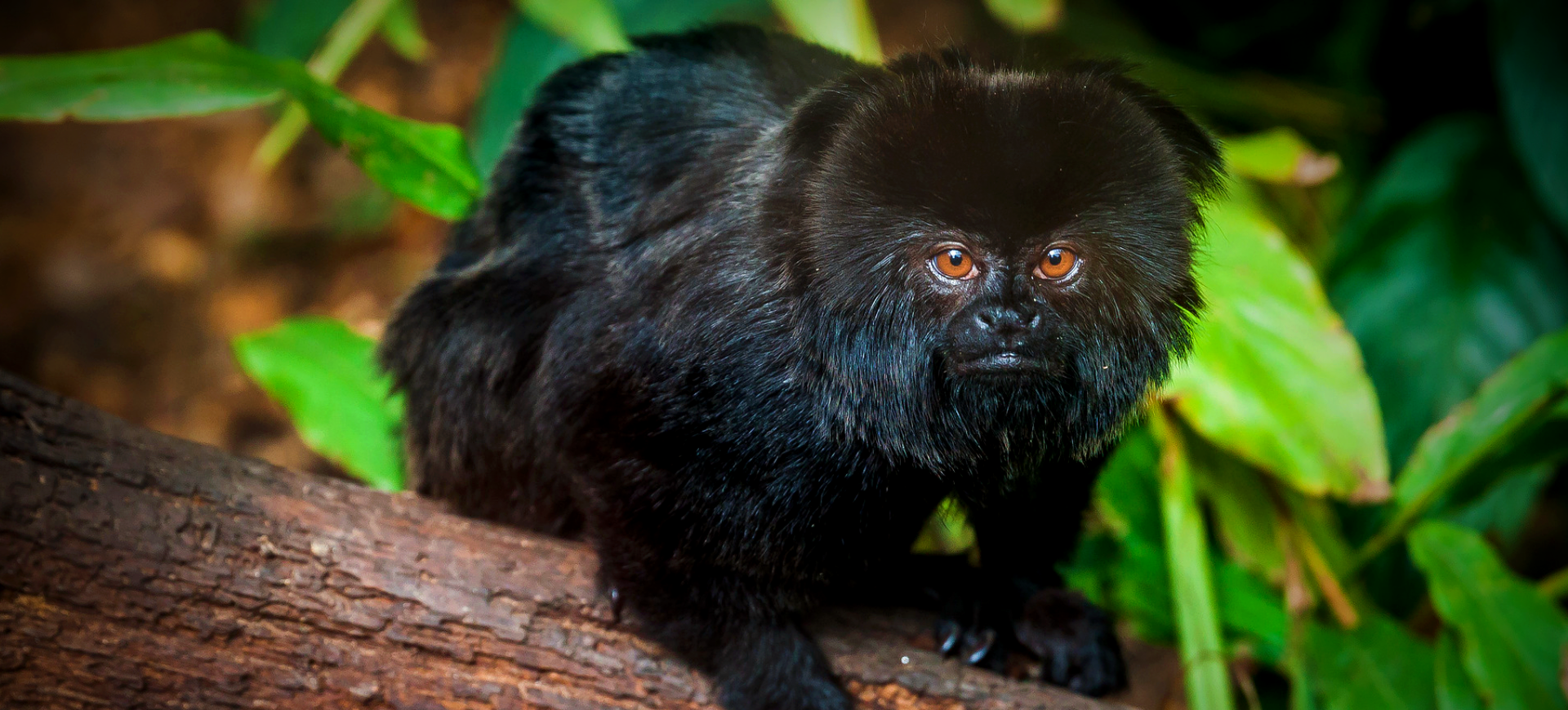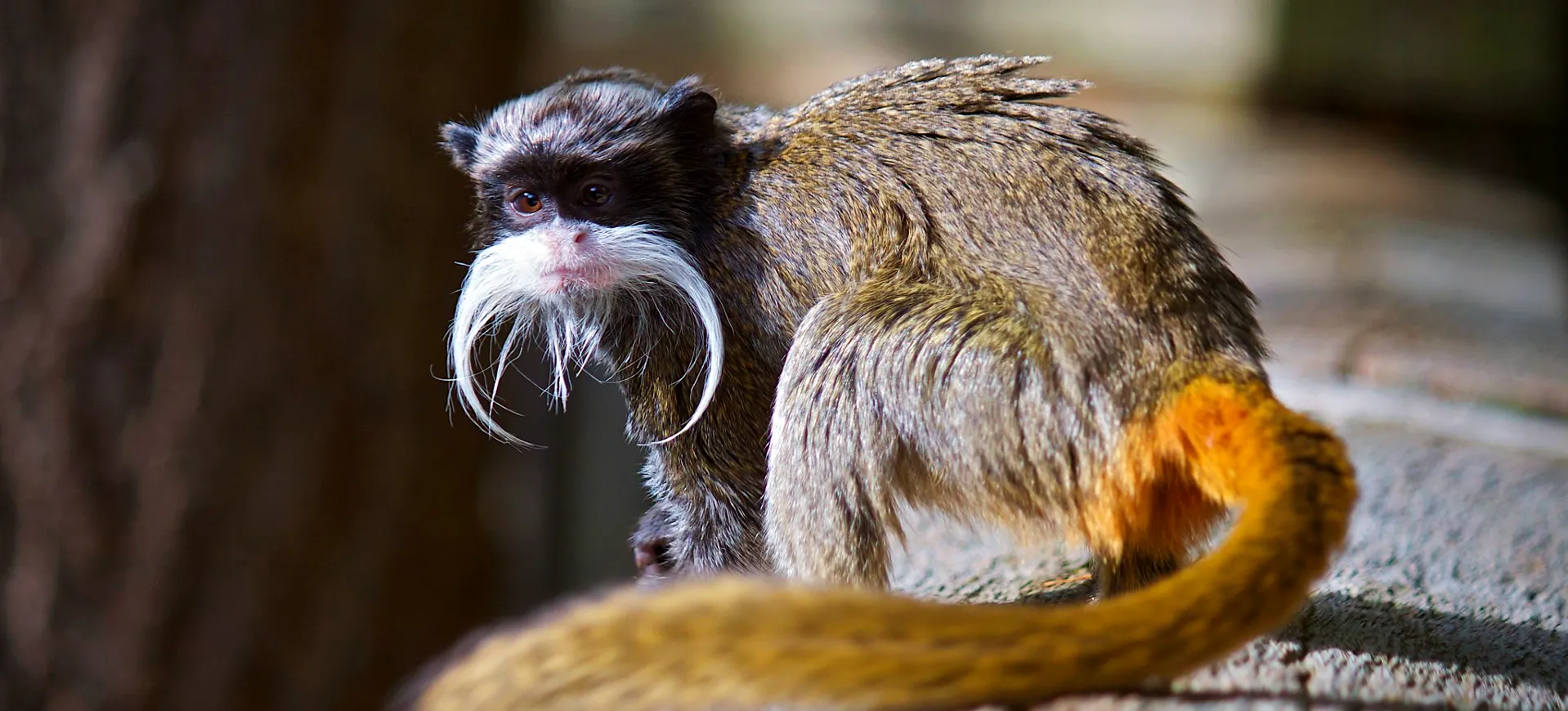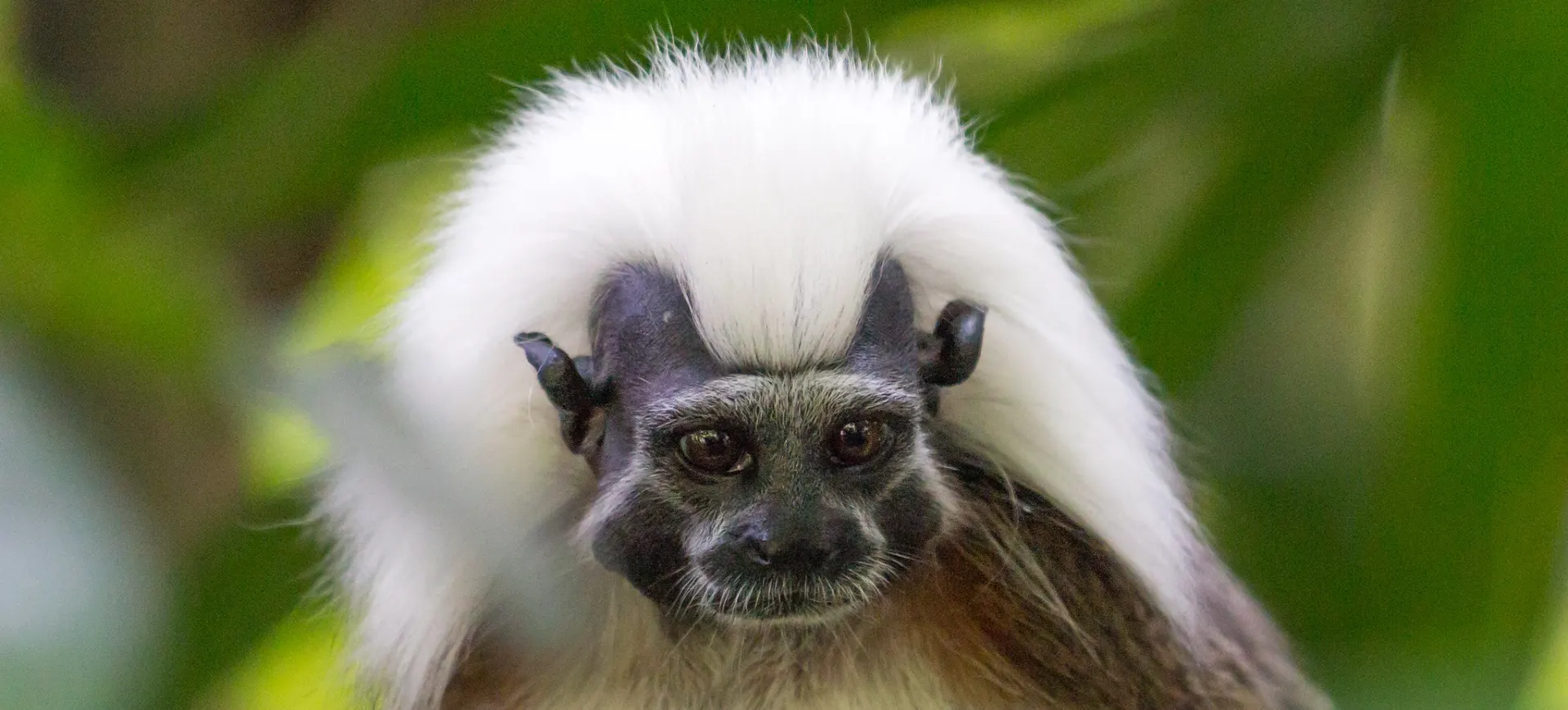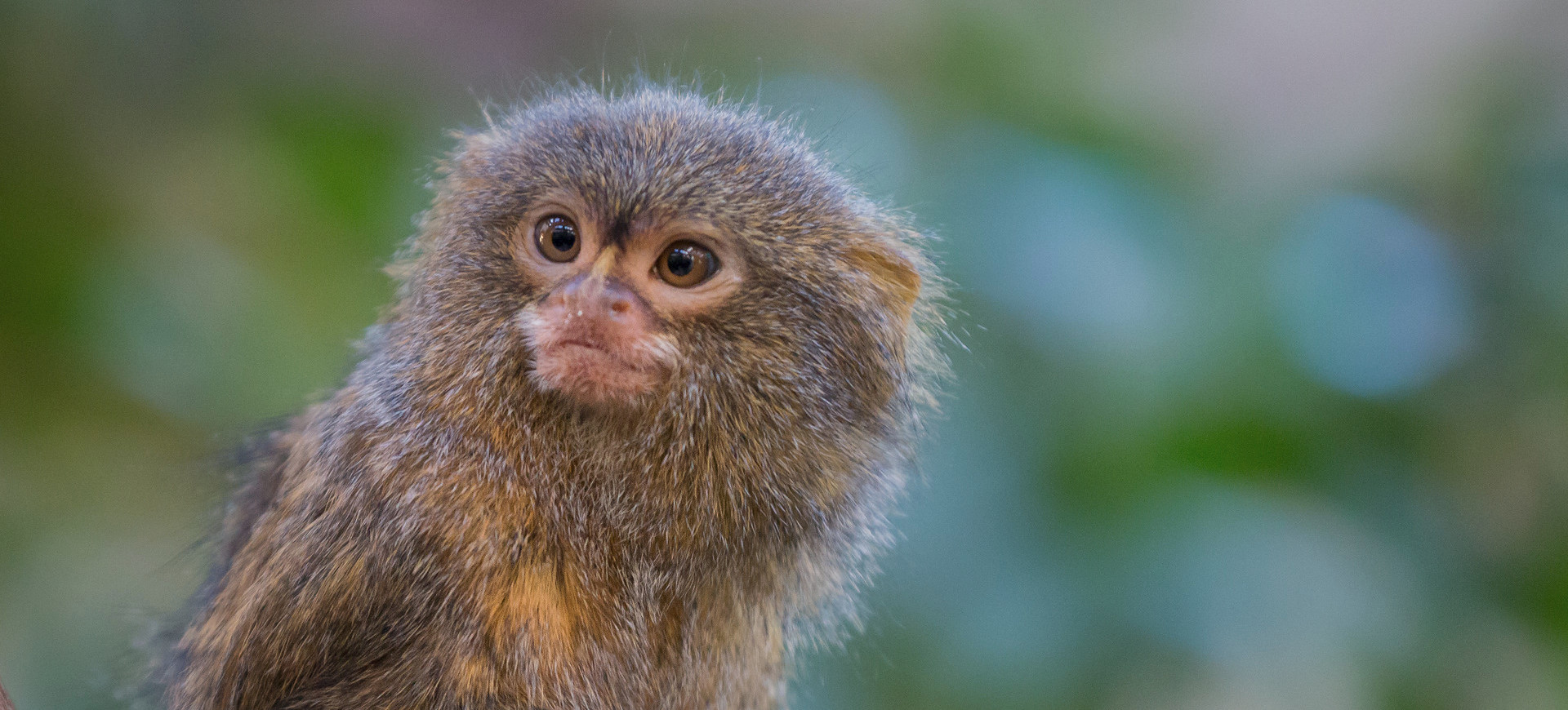Overview
The Golden Lion Tamarin, also known as the golden marmoset, is a small New World monkey of the family Callitrichidae. One of the most captivating visual attributes is its vibrant, golden-orange fur which grants the species its descriptive name. The striking coloration extends over most of its body, and it can give off a golden glow in sunlight. They are best recognized for their lion-like manes around the face and ears, though they’re much smaller than a lion at just about 261 mm (10.3 inches) tall.
Golden Lion Tamarins live high in the trees and are incredibly active and agile. They have long, slender fingers and claws instead of nails on all digits except the big toe, which allows them to quickly move through the trees and probe crevices for insects. They are also known for their high-pitched calls and complex vocalizations, communicating with group members and warning others of predators or threats.
This species is diurnal (active during the day) and displays unique behaviors such as communal care for the young and sharing of food resources. They have a cooperative social structure based on a breeding pair and their offspring. The Golden Lion Tamarin is a highly social creature, often seen in family groups of up to fifteen members, but typically smaller.
Taxonomy
Kingdom
Phylum
Class
Order
Family
Genus
Species
Type
Physical Description:
Golden Lion Tamarins are easily recognized by their golden-orange fur, which is longer and denser around their faces forming a mane. Their bodies are lean and agile, built for life in the trees. They have a small, slender build with a body length of 6-10 inches and a tail that is typically longer than their bodies, ranging from 12-15 inches. The tail isn’t prehensile but provides balance when moving through the treetops.
Their faces are hairless and dark-colored, contrasting with their bright fur. They have round, forward-facing eyes that provide good depth perception for moving through the trees and spotting food. Golden Lion Tamarins also have specialized teeth for their insect-heavy diet, featuring sharp canines and incisors.

Lifespan: Wild: ~15 Years || Captivity: ~20 Years

Weight: Male: 1.4-1.6 lbs (0.63-0.72 kg) || Female: 1.3-1.5 lbs (0.59-0.68 kg)

Length: Male & Female: 6-10 inches (15.24-25.4 cm)

Height: Male & Female: 9.8-12.6 inches (24.89-32 cm)

Top Speed: 24 mph (38.6 km/h)
Characteristic:
Native Habitat:
Golden Lion Tamarins are native to the Atlantic coastal forests of Brazil, particularly the state of Rio de Janeiro. They inhabit the canopies of lowland and coastal rainforests, preferring secondary forest growth where the vegetation is dense. This preference likely stems from their need for hollow tree cavities, their sleeping sites. They’re known to inhabit regions up to 300 meters in elevation.
These tamarins spend almost their entire life in the trees, rarely touching the ground. Their habitat is characterized by high rainfall and a humid environment, with temperatures relatively stable throughout the year. The trees provide food and shelter and serve to evade ground-dwelling predators.
Climate Zones:
Biomes:
WWF Biomes:
Biogeographical Realms:
Continents:
Countries:
Diet:
Diet & Feeding Habits:
Golden Lion Tamarins primarily feed on fruits, but they are omnivorous creatures and consume leaves, flowers, nectar, bird eggs, insects, and small invertebrates. They use their long fingers to probe crevices and holes in trees, searching for insects. Their diet changes depending on the season, with fruit making up most of their diet in the wet season and insects and small invertebrates being consumed more during the dry season.
Their foraging strategy is quite efficient, with members of a family group spreading out to cover more area. They have been observed using a cooperative hunting strategy where one tamarin flushes out pre,y, and another catches it. This adaptability in their diet and foraging strategies has allowed them to survive in a habitat where food sources change significantly throughout the year.
Mating Behavior:
Mating Description:
Golden Lion Tamarins have a monogamous mating system, where one male and one female mate exclusively. The dominant female in a group is the only one that typically reproduces. Mating can occur throughout the year, but there is a peak in conception during the rainy season, resulting in most births occurring when food is most abundant at the start of the dry season.
Gestation lasts about 125-130 days, resulting in the birth of usually twins, but single births and triplets can occur. Both parents, as well as other members of the group, take part in caring for the young, a behavior known as cooperative breeding. The father carries the infants most of the time, giving them to the mother only for nursing.
Reproduction Season:
Birth Type:
Pregnancy Duration:
Female Name:
Male Name:
Baby Name:
Social Structure Description:
Golden Lion Tamarins live in family groups typically consisting of a mated pair and their offspring. These groups, typically ranging from 2-8 individuals, but sometimes up to 15, are cooperative, sharing in the tasks of foraging, grooming, and looking after the young. Adult offspring often remain in their natal groups until they can establish their own.
Their social behavior is characterized by a high degree of cooperation and mutual tolerance. They communicate through complex vocalizations, visual signals, and scent-marking systems. They also practice alloparenting, where individuals other than the parents help care for the young.
Groups:
Conservation Status:
Population Trend:
The wild population of Golden Lion Tamarins was down to just a few hundred individuals in the 1970s. However, thanks to intensive conservation efforts over the last several decades, their population has been increasing and is estimated to be around 2,500 individuals. These tamarins are scattered across various fragmented habitats within their range.
In captivity, there are estimated to be 500 individuals or slightly more, many of which are part of managed breeding programs. These captive populations are crucial for maintaining the species’ genetic diversity and for reintroduction programs that aim to increase the wild population.
Population Threats:
The primary threat to the Golden Lion Tamarin is habitat loss due to logging, agriculture, and urbanization, leading to habitat fragmentation. These activities have resulted in losing over 90% of the original Atlantic forest where they live. Fragmentation can lead to the isolation of populations, making finding mates difficult and increasing the likelihood of inbreeding.
The illegal pet trade is another significant threat, given their striking appearance. They also face threats from predators, such as birds of prey and snakes, and diseases can impact population numbers, especially in fragmented and small populations.
Conservation Efforts:
Conservation efforts for the Golden Lion Tamarin have been extensive and span several decades. The Golden Lion Tamarin Conservation Program is a notable effort, combining field research, community engagement, environmental education, and policy advocacy to protect this species. This program has successfully increased the wild population of tamarins through the reintroduction of zoo-born animals and the translocation of wild groups to larger, suitable habitats.
Protected areas have also been established within their range, and reforestation efforts are ongoing to reconnect isolated forest fragments. Education and awareness programs are being implemented in local communities to reduce illegal capture and trade.
Additional Resources:
Fun Facts
- The Golden Lion Tamarin gets its name from its vibrant golden-orange fur and the extra long hairs around the face and ears, which resemble a lion’s mane.
- They are excellent climbers and spend nearly all their time in trees.
- They have elongated hands and fingers, which they use to probe into crevices for insects.
- Unlike many primates, Golden Lion Tamarins do not have opposable thumbs.
- Their tails are longer than their bodies and help them balance, but are not prehensile.
- They use different calls and songs to communicate with each other, some of which can be heard up to half a kilometer away.
- These tamarins often give birth to twins, which is rare among primates.
- They have a unique family structure in which older siblings help care for the younger ones.
- Golden Lion Tamarins are considered a flagship species for the conservation of the Atlantic Forest of Brazil.
- Through conservation efforts, their population has increased from 200 in the 1970s to around 3,200 today.





